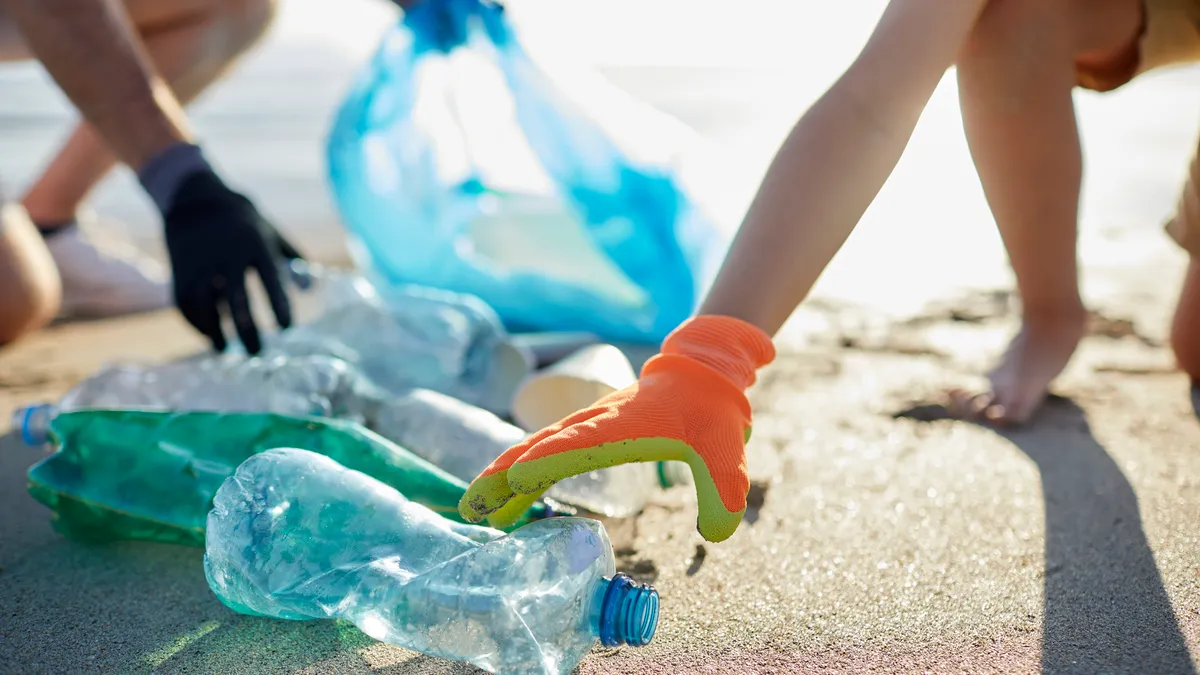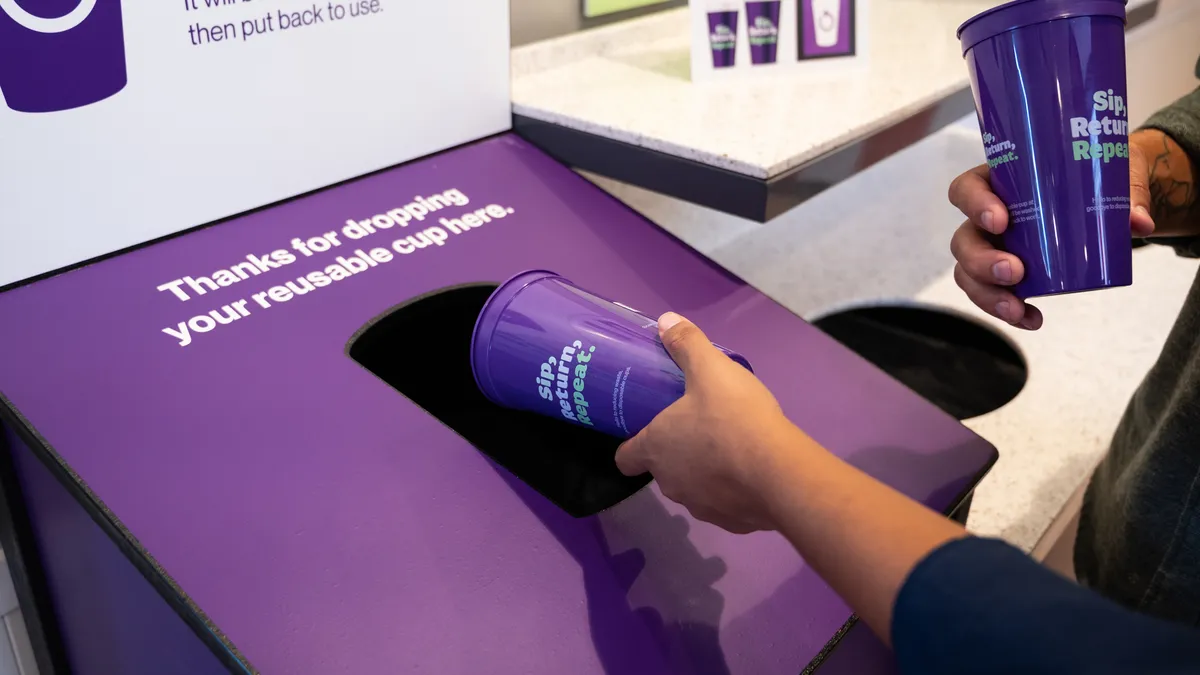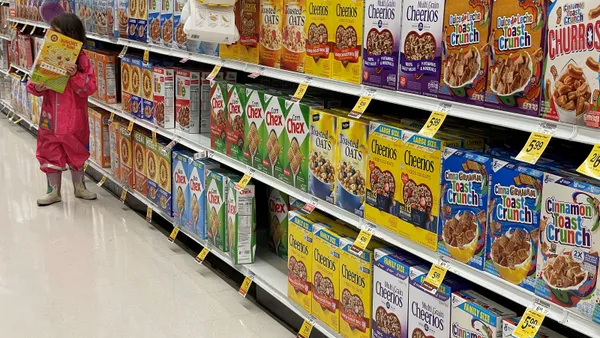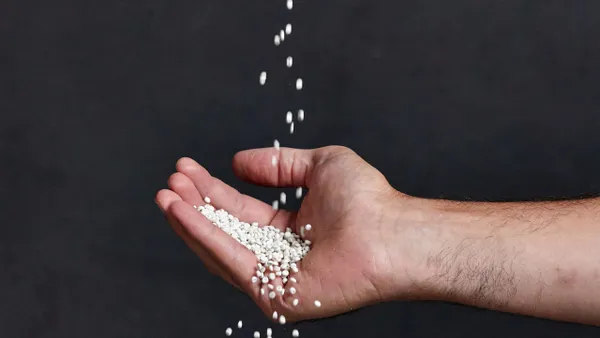Six years after launch, the global Plastics Pact Network has influenced the elimination of 360,000 metric tons of problematic and unnecessary plastics, according to its inaugural progress report, released this month.
The report details the work of such pacts around the world on four plastic packaging targets: to eliminate items that are problematic and unnecessary; make it reusable, recyclable or compostable; increase the amount that is recycled; and increase recycled content. The network reports that its influence since its inception includes:
- Redesigning more than 850,000 tons of plastic packaging so it is reusable, recyclable or compostable at scale.
- Increasing recycled content in packaging by 44%, with more than 2.2 million tons of virgin plastic use avoided in 2022.
- Increasing by 9% the amount of plastic packaging recycled in pact countries, totaling 463,000 tons.
Specifically in the U.S. in 2022:
- Recycling levels increased to 9.4%, up from 8% in 2021.
- The amount of packaging that was reusable, recyclable or compostable reached 47.7%, up from 36% the prior year.
The authors also included the U.S. in case studies that accompanied the main report. It highlights the U.S. Plastic Pact’s strategy to increase the amount of postconsumer recycled content in packaging. USPP developed a PCR procurement toolkit, and most members who use packaging made public commitments to use PCR. In January 2022, USPP published a list of 11 problematic or unnecessary plastic packaging materials; within a year of implementation, the amount of these items that members placed on the market — as a proportion of the total plastic packaging they placed on the market — decreased from 14% to 8%.
The U.S. Plastics Pact, which on Wednesday released its Design for Circularity Playbooks and in June released a 2030 road map, is one of the 12 national or regional pacts. The Plastics Pact Network first launched in the U.K. in 2018 and now consists of more than 900 local and global members in 19 countries that include brands, retailers, restaurants, waste management companies, government entities and non-governmental organizations. All pacts share the common goal to create a circular economy for plastics and eliminate plastic waste and pollution.
The report clarifies that although the broader network has been around for about six years, many individual pacts only formed in the last three years; USPP formed in 2020. Their short existence underscores the “impressive impact” that has occurred, the report suggests.
The report is the network’s first and covers data from 2022. It was compiled by WRAP and the Ellen MacArthur Foundation.
Beyond achieving the four stated targets, the global network has had “a significant structural impact that is crucial to change the plastics system for the benefit of people and the planet,” according to the progress report. The group aims to focus on environmental justice and social equity in the transition to a circular plastics economy.
“It is not enough simply to mitigate environmental damage; we must also ensure that the benefits and burdens of ecological policies are distributed fairly,” the report says. “As the world strives to address the causes and impacts of plastic pollution, it is imperative that the transition does not exacerbate existing vulnerabilities or create new inequities.”
One example is recognizing and working with informal workers in the plastics value chain. There are more than 20 million informal waste pickers globally who collect, sort and/or sell materials for recycling, the report says; the materials they gather account for over half of the plastic waste collected for recycling globally. Helping to scale informal plastics systems, not just linear ones, is a focal area for future action.
Going forward, the network intends to accelerate and scale its impact at the national and global levels. Some strategies to achieve the goals include putting more of a focus on key challenges and increasing the emphasis on informing policy. The network members and partners also are seeking additional funding.
Some of the main challenge areas that the network plans to address include infrastructure; scaling up reuse and refill solutions; handling films and flexibles, which are still considered non-recyclable in practice; and coatings or barriers that hinder recycling.
The Plastics Pact Network also is calling for a bold global plastics agreement with rules to accelerate policy and business action. Legally binding measures are essential to level the playing field for all countries and businesses, it says. “The current negotiations for a Global Plastics Treaty offer a unique opportunity to establish and enforce effective and well-designed EPR schemes around the world,” the report says.















